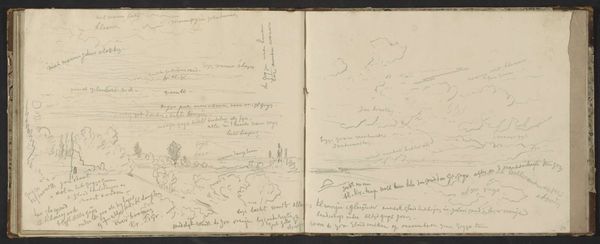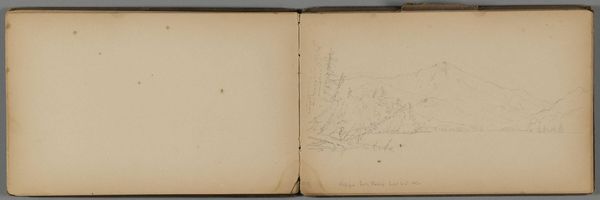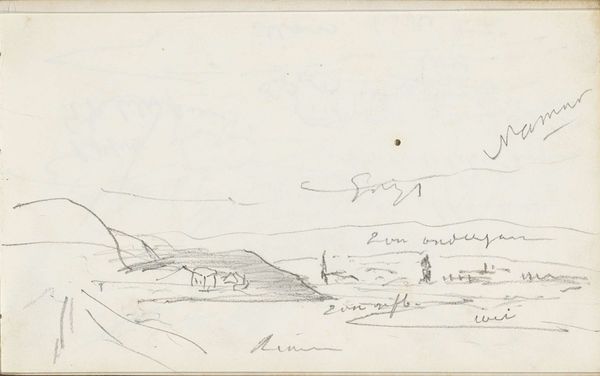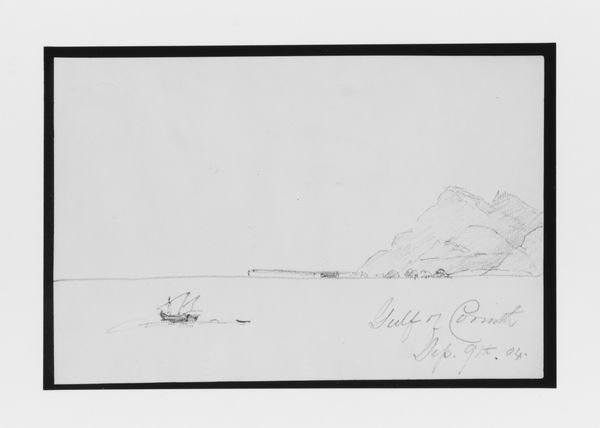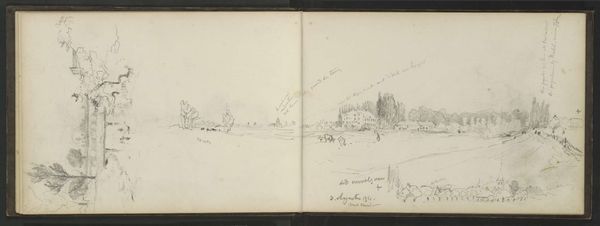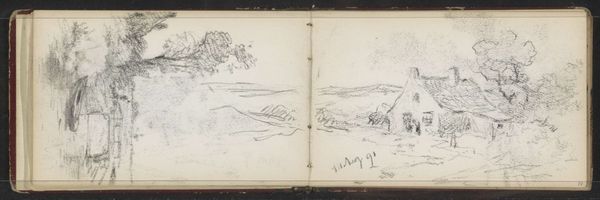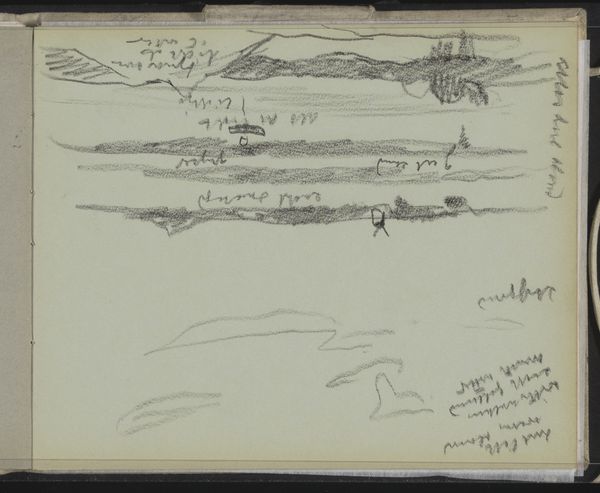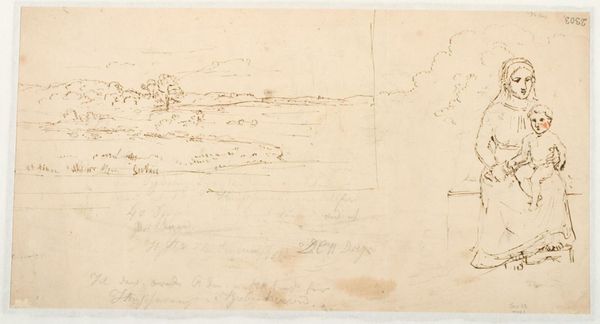
Copyright: Rijks Museum: Open Domain
Curator: Welcome. We're now viewing "Bergen aan de Rijn," a drawing created by Johannes Tavenraat in 1859. It’s a pencil sketch housed at the Rijksmuseum. Editor: My immediate impression is one of distance and ethereality. The lines are so delicate, it's like a memory of a landscape rather than a literal depiction. It almost fades before your eyes. Curator: Absolutely. The use of pencil allows for a hazy atmosphere that aligns with Romantic ideals. You see a landscape that inspires both awe and quiet contemplation. I also see faint inscription along the bottom edge. Perhaps the artist sought inspiration there. Editor: The composition leads your eye carefully. From the darker, textured foreground of foliage on the left page across a stretch of relatively blank space, which provides a rest, and onward towards the series of delicately outlined hills that culminate in the large cloud on the right-hand page. The artist uses asymmetry in the work’s geometry to invite prolonged observation. Curator: Indeed. And within that geometry lies symbolic depth. The figures on the left bank almost seem to teeter on the landscape's edge; do they represent humankind's relationship with an imposing natural world? Editor: I’d suggest that’s highly probable. Consider how insignificant those tiny human figures appear to be in comparison with that majestic expanse of landscape. They are there to provide scale, but also suggest human impermanence against nature's eternal presence. Curator: The text at the bottom right only underscores the reading that Bergen on the Rijn reflects humanity's connection with the earth, written by the artist. Editor: Precisely. The inscription makes it personal and adds another symbolic dimension that blends reality and romantic expression. A fascinating dialogue between what's there and how we experience it. Curator: A sentiment that is beautifully articulated through these ethereal pencil strokes. It brings both an understanding of nature, and insight into a complex and individual vision. Editor: Yes, through a close examination of this relatively simple pencil drawing, we discover multiple layers of compositional complexity and human symbolism. It exemplifies how careful analysis can be so richly rewarding.
Comments
No comments
Be the first to comment and join the conversation on the ultimate creative platform.

